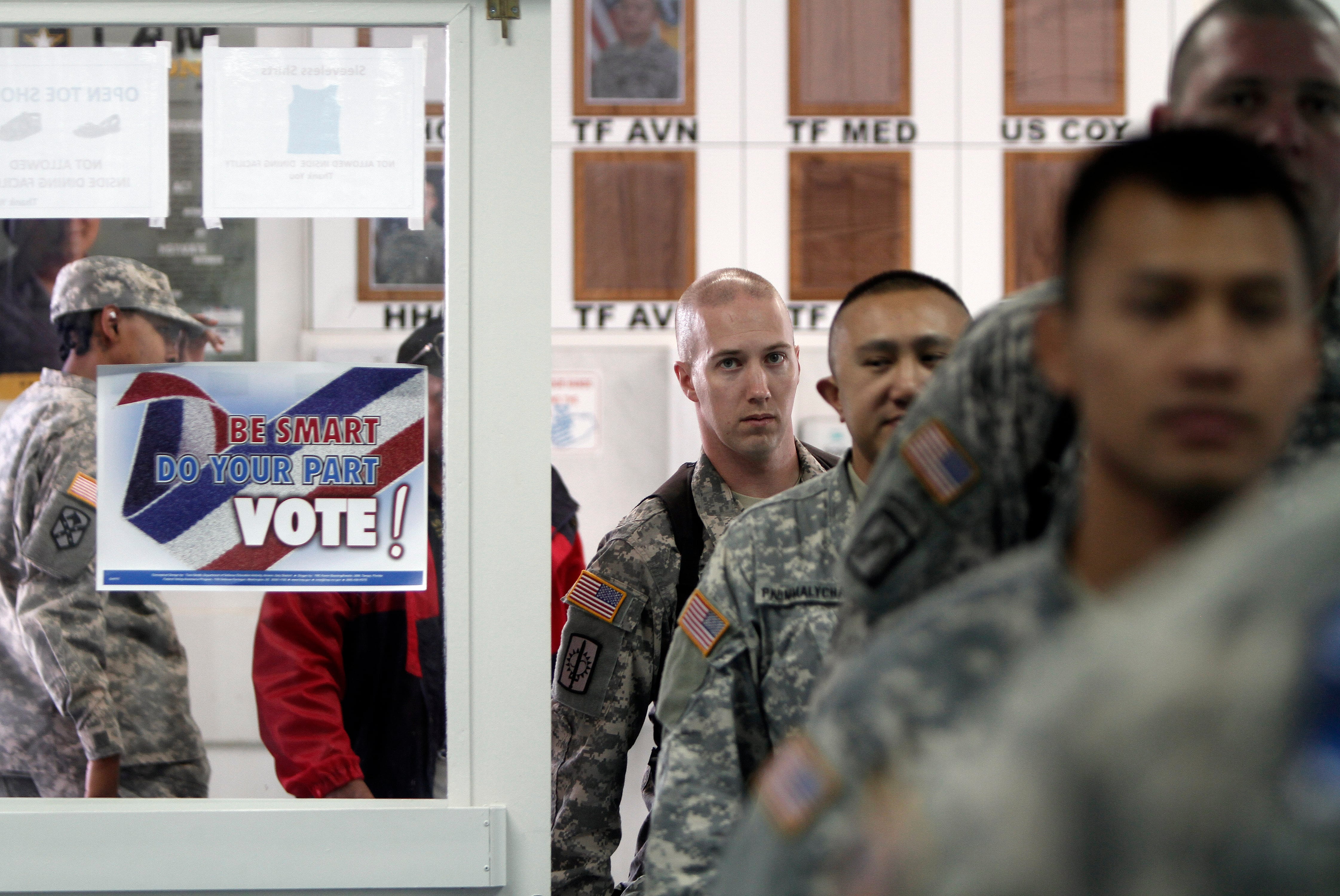When Mark Gerow works with his fellow veterans to help them manage stress, he explains it like this: Wild animals release their tension as soon as a threat is over by moving their bodies. Humans usually do things differently. We compartmentalize and keep on going, protecting ourselves in the moment but leaving us carrying tension.
When that tension piles up and new sources of stress keep coming (we’re looking at you, lingering pandemic and sky-high gas prices), it can be really valuable to have a few quick and easy strategies for slowing down and feeling calmer. Veterans aren’t the only people who have stress, of course. But their experiences in the military can lead to both short- and long-term stress management issues, even if they are not formally diagnosed with PTSD or anxiety from their time in the service.
Like Gerow, military spouse and yoga therapist Pamela Stokes Eggleston works with veterans and military caregivers, using yoga and breath work to release stress and tension. She’s seen many wounded warriors sleep better and improve their lives just by discovering the power of stretching and breathing well.
Eggleston and Gerow share some simple stretches and breathing exercises that you can do anywhere in as little as one or two minutes to manage stress. Moves like these “won’t necessarily take care of the deeper stuff,” Gerow says, but they “will give you temporary relief to get through a hard patch, to get you back to sleep or to calm your nerves.”
1. Focused breathing: Breathe in and out slowly, and choose one part of your breath to focus on. You can focus on just your inhales, really noticing each time air comes into your body through your nose. Or focus on just the exhales, paying attention to the feeling of air moving out of your body and allowing yourself to forget everything else for a moment. Whether you focus on inhales or exhales, or even on the brief pause between them, Eggleston says even 30 seconds of focused breathing can calm your body.
2. Longer exhales than inhales: If you’re awake at night with your mind racing, Gerow recommends breathing with a 1-to-2 ratio. Breathe in slowly counting to three, then breathe out counting to six. (To slow down even further, breathe in for four, then out for eight.) These longer exhales will lower your heart rate and can calm you down quickly, he says. A similar option many service members learn is “box breathing,” where you breathe in counting to four, hold your breath for four, breathe out for four, then hold again for four.
3. Joint-freeing movements: It can help your mind as well as your body to systematically move and stretch your wrists, hands and fingers, and then your ankles, feet and toes. Eggleston says these moves can be done anywhere; she recently used them on a cross-country flight.
4. Belly breathing. Eggleston and Gerow both suggest taking a moment to notice where in your body you are breathing. “A lot of veterans are chest breathers. They’re breathing up, and their clavicles are lifting,” Eggleston says. Gerow has seen the same thing: “We don’t think about shallow breathing, chest breathing, mouth breathing. But a lot of it happens for people that are stressed out.” Try taking a moment to breathe all the way down into your belly. Fill your belly with air, then draw in your diaphragm to exhale. This rhythmic movement of your diaphragm will stimulate your vagus nerve, slowly shifting you out of fight-or-flight mode into a calming, parasympathetic response.
Beyond their physical impact, these moves give your mind a brief break from whatever thoughts you might be stressing about. Taking that break, even for two minutes, can make things more manageable when you return to focusing on an issue.
“Even if you can’t move and you’re stuck in a car or something like that,” Eggleston says, “you can acquire these tiny bits of joy and release and levity.”




